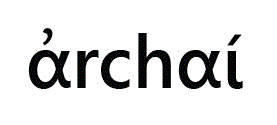Resumo em Italiano:
Resumo: Diagora e Teodoro sono due degli atei ricordati in vari cataloghi sugli atei dell’antichità, il primo dei quali risalente al II sec. a.C., e da allora in poi ricordati, dagli antichi fino ai giorni nostri, immancabilmente con la qualifica di atei. In effetti l’ateismo condannato ad Atene affondava le sue radici nella cultura filosofica e scientifica presocratica, la cui impronta fondamentalmente “materialistica” è autorevolmente testimoniata da Aristotele (Metafisica I 983b5-10). Le filosofie di Anassimandro, Anassimene, Senofane, Eraclito, Anassagora, Diogene di Apollonia, e naturalmente degli atomisti e dei sofisti offrirono, sia pure in maniere diverse, non solo un supporto importante alla critica delle divinità tradizionali, ma anche le fondamenta filosofiche dell’ateismo. Con questa tradizione Diagora non ha nulla a che vedere; anche alcune vicende della sua vita possono al massimo meritargli l’accusa di empio, ma non di ateo. Di altra tempra culturale appare Teodoro, vicino non solo alla cultura della scuola cirenaica, ma anche dei cinici e dei sofisti. Di lui abbiamo non solo dei riferimenti a dottrine filosofiche, ma anche chiare testimonianze del suo ateismo, essendosi dedicato a «eliminare radicalmente le comuni credenze negli dèi». In conclusione, mentre il nome di Diagora può tranquillamente cancellarsi dai cataloghi degli atei, quello di Teodoro a buon diritto vi fa parte.
Resumo em Inglês:
Abstract: Diagoras and Theodorus are two of the atheists remembered in several catalogues of atheists in Antiquity, the first of which dates back to the 2nd century BC, and from then on invariably referred to by the ancients and to the present day as atheists. In fact, the atheism condemned in Athens had its roots in the pre-Socratic philosophical and scientific culture, whose fundamentally "materialistic" imprint is authoritatively testified to by Aristotle (Metaphysics I 983b5-10). The philosophies of Anaximander, Anaximenes, Xenophanes, Heraclitus, Anaxagoras, Diogenes of Apollonia, and of course the Atomists and Sophists offered, albeit in different ways, not only some important support for the critique of traditional divinities, but also for the philosophical foundations of atheism. Diagoras has nothing to do with this tradition; even some events in his life may at most merit the accusation of being impious, but not of being an atheist. Theodore appears to be of a different cultural temperament, close not only to the culture of the Cyrenaic school, but also to that of the Cynics and the Sophists. We have not only references to his philosophical doctrines, but also clear evidence of his atheism, having dedicated himself to "radically eliminating common beliefs in the gods". In conclusion, while Diagora's name can safely be removed from the catalogues of atheists, Theodore's is rightly included.
